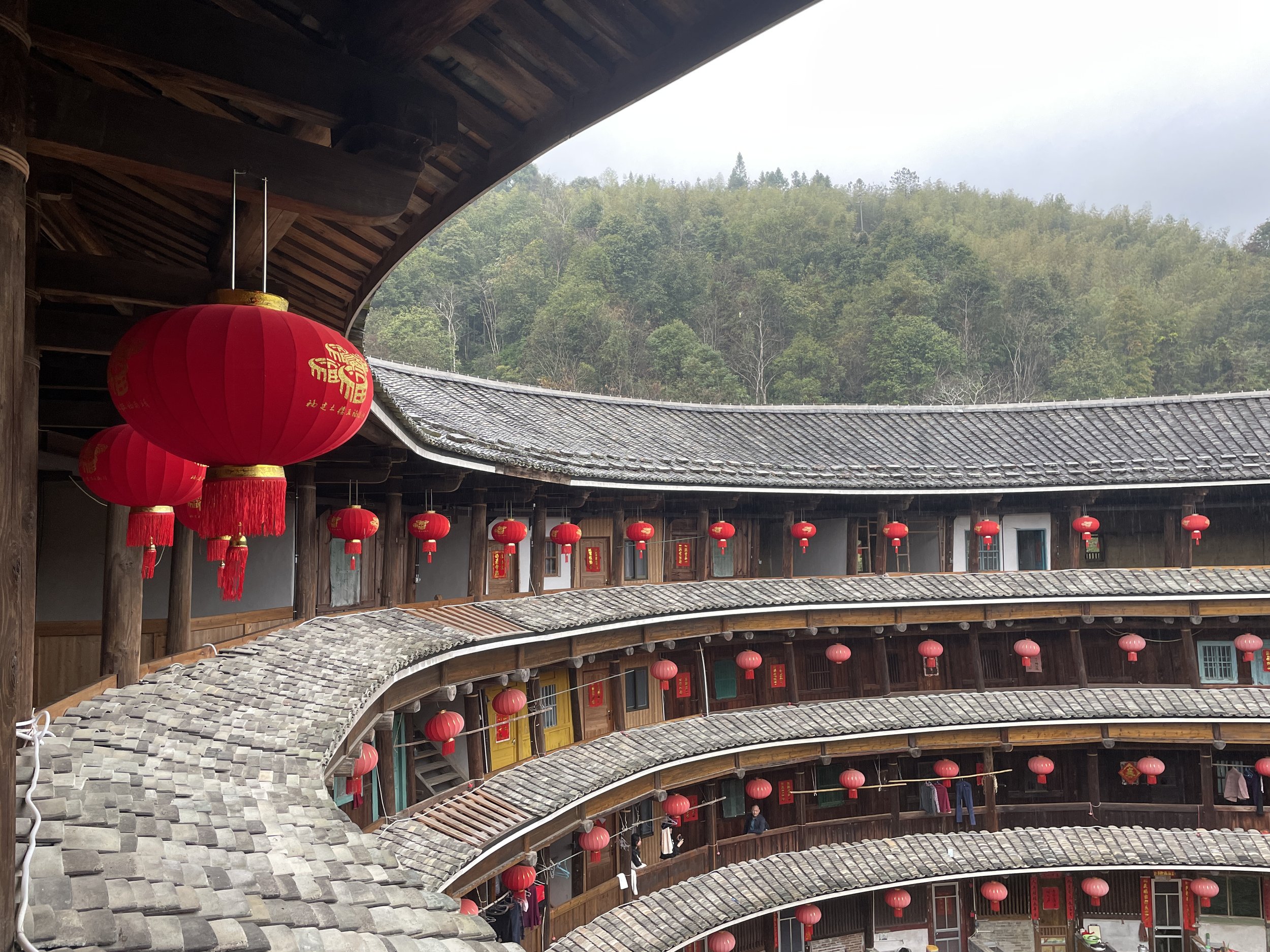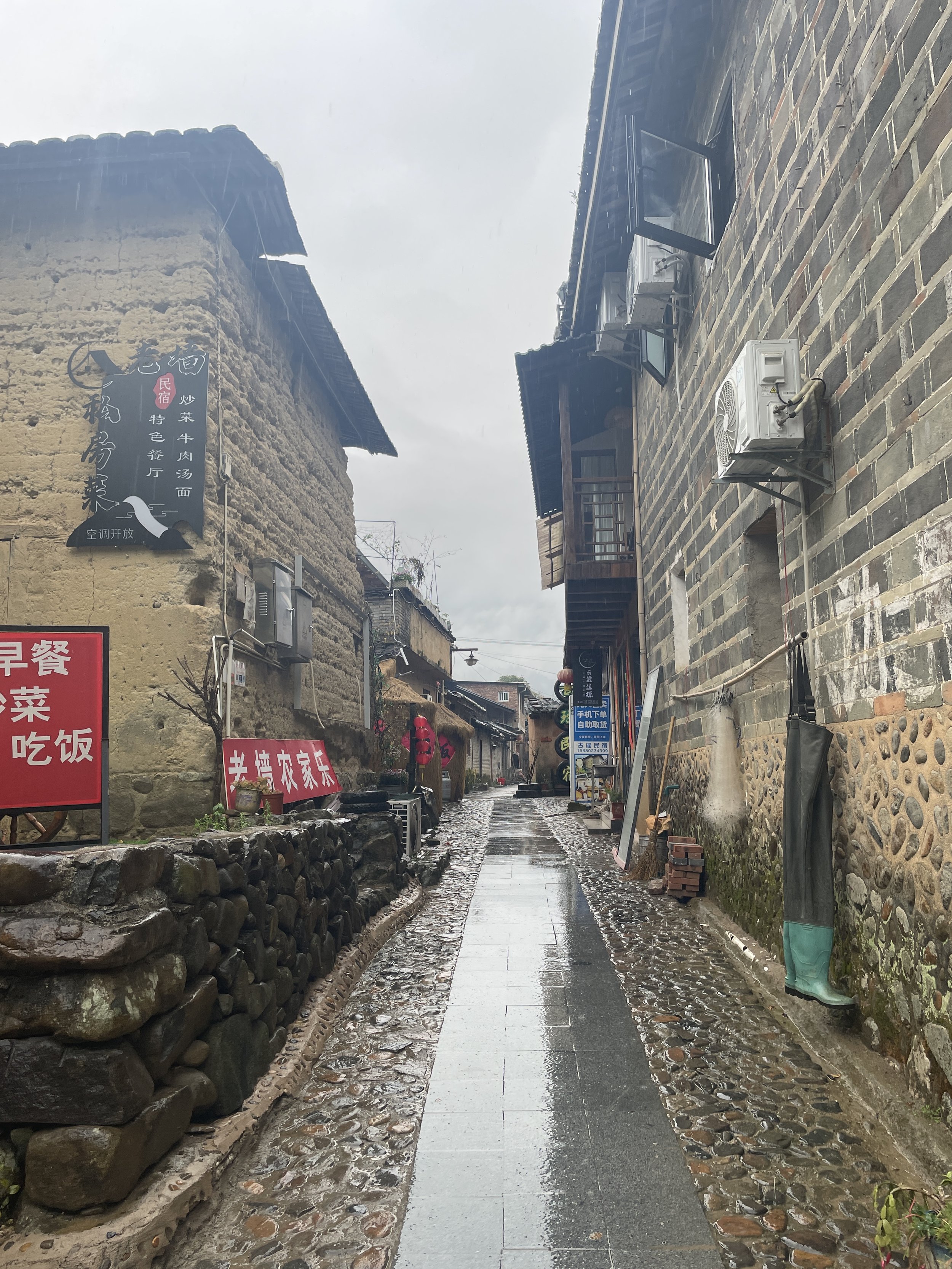Four Dishes and One Soup 四菜一汤
March 4, 2025
Today, I joined a small group tour to visit Nanjing Tulou, one of the most famous tulou clusters in China. Our group consisted of five adults and a three-year-old girl. I was the last person to be picked up at 9 AM, and since I was the only solo traveler, I was lucky to get the comfortable front seat in the van. The drive from Xiamen to the scenic area took about two hours.
Upon arrival, I encountered a minor issue with ticket verification—the tour company couldn’t use my passport to purchase the ticket, so they used another person’s ID number instead. At the entrance, I was instructed to tell the attendant that I didn’t have the physical card, only the number. However, the deception was obvious because Chinese ID numbers include the birth year, and I was clearly not born in 1983, which is on the ID. Fortunately, the attendant didn’t question it too much, and I was able to enter without any problems.
Just as our tour started, rain began to fall, so we walked around with umbrellas in hand.
Our first stop was Hegui Lou, built in 1732. This is the tallest square tulou in Fujian, standing at five stories high. It was constructed in a marshy area, relying on wooden columns for support, giving it the appearance of floating on water. Inside, the wells have water levels slightly above the ground, reinforcing its name as the “Water Tulou.”
Next, we visited Cuimei Lou, which wasn’t included in the tour package, so we paid an extra $1.50 to explore the upper floors. Since this tulou was not part of the organized tour, it was much quieter—an excellent spot to admire the architecture and take photos without the usual crowds.
We then strolled through Yunshuiyao Ancient Village, known for its centuries-old banyan trees, cobblestone streets, and flowing rivers, creating a peaceful and poetic atmosphere. However, due to the gloomy weather, the village failed to impress me.
Our next stop was Zhongxing Lou, a square-shaped tulou that now serves as a tulou museum. We were allowed to go up to the upper floors and balconies, which provided a better view of Huaiyuan Lou, our next destination.
Built in 1907, Huaiyuan Lou is one of the best-preserved and most beautiful round tulou in Fujian. It features exquisite wooden carvings and perfectly symmetrical architecture, making it a prime example of classical tulou design. Traditionally, each floor had a specific purpose: the first floor was used as a kitchen and cooking area, the second floor for storage, the third and fourth floors for living quarters, and the fifth floor for miscellaneous purposes, including storing coffins before burial. Nowadays, very few people still live inside the tulou, except for some elderly residents.
After lunch, we visited Yuchang Lou, one of the oldest and largest round tulou in Fujian, built in 1308 during the Yuan Dynasty. This tulou is famous for its tilted wooden columns on the upper floors, which lean significantly due to construction errors, yet the structure has remained standing for over 700 years. Inside, every room on the first floor had a well—a rare feature.
Without a doubt, the best part of the tour was saved for last. The Tianluokeng Tulou Cluster, nicknamed “Four Dishes and One Soup,” did not disappoint. This world-famous site features four round tulou surrounding a square tulou, forming a layout that resembles a traditional Hakka meal, with the round tulou representing four dishes and the square tulou symbolizing a bowl of soup. The aerial view of this cluster is iconic and breathtaking.
Despite the rainy start, the day turned out to be an unforgettable experience, offering a deep insight into Hakka culture, history, and architectural wonders.

































